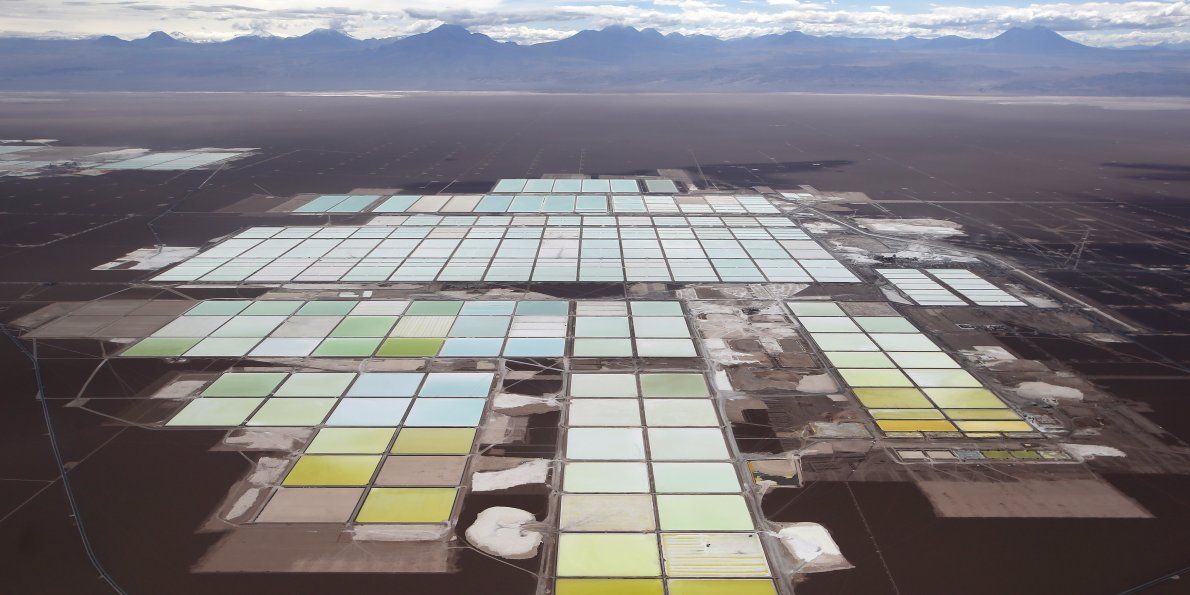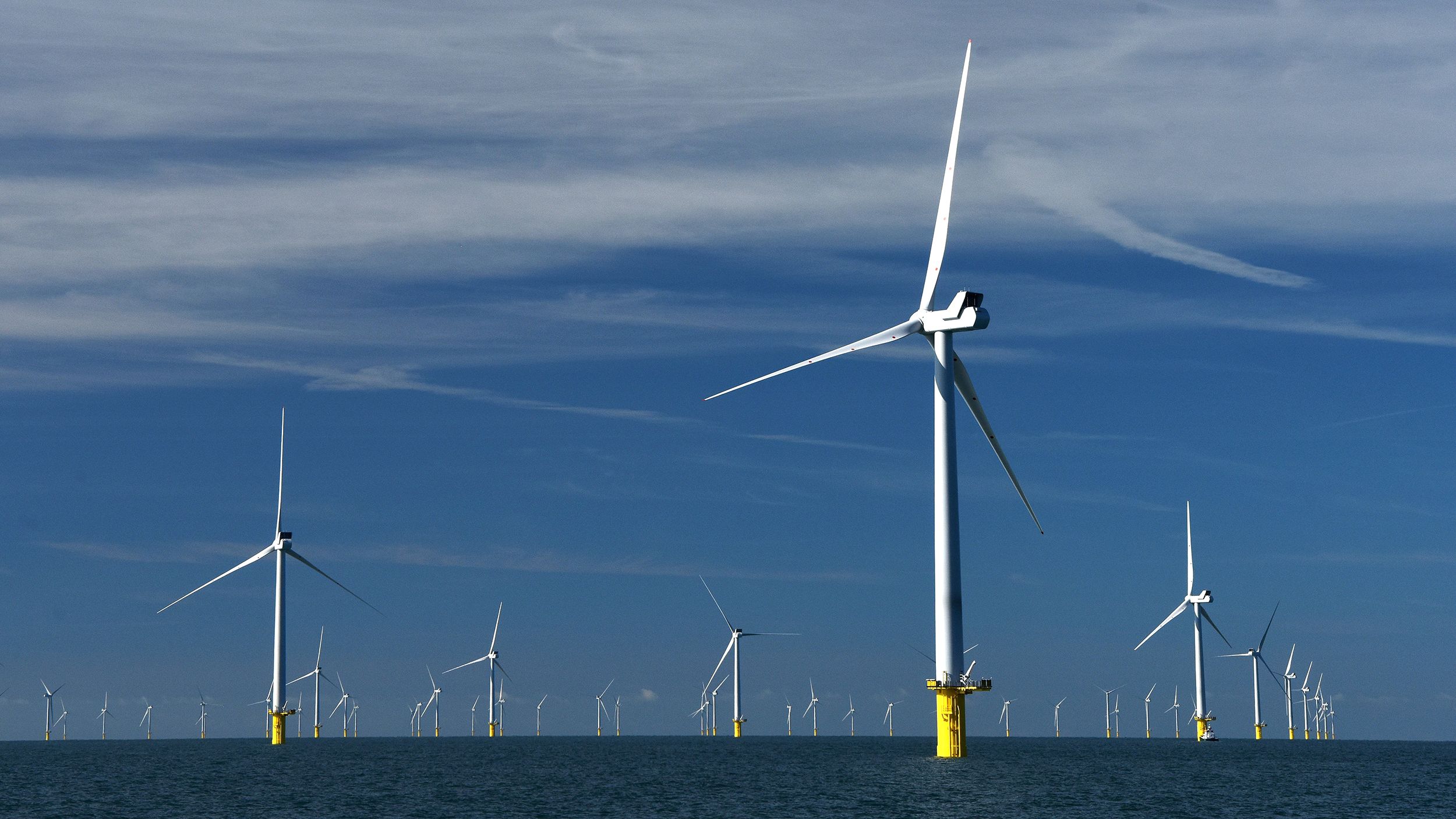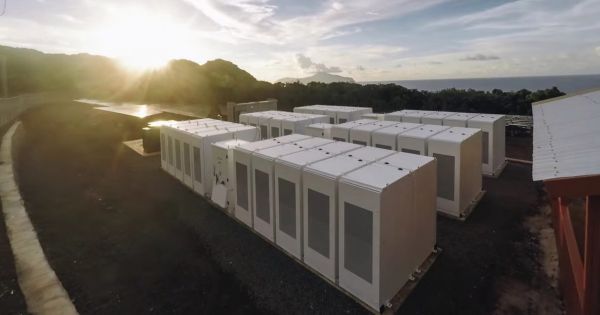NASA’s OCO-2 satellite has detected a dramatic spike in global atmospheric carbon dioxide, and overheated tropical forests are partly to blame.
Category: sustainability – Page 644

There’s a new challenger to lithium batteries
With the EV market about to explode and the European Union planning a battery-making consortium to bring the continent onto the global EV battery scene, Stanford researchers released a paper claiming their sodium battery could compete with the lithium-ion market leader.
New battery development has been fairly slow against the backdrop of the projected electric car market size, and so far no innovation has proved to be as economical as lithium-ion. The Stanford battery uses sodium—a cheaper, more abundant material than lithium—and is still in the development stages.
Sodium makes up the Stanford battery’s cathode, and the anode is made from phosphorus, with the addition of a compound called myo-inositol, which can be derived from rice bran or corn. According to the researchers, this chemical combination yields efficiency rates comparable to that of lithium-ion batteries at a lower cost—a much lower cost.

How scientists and supercomputers could make oceans drinkable
Aleksandr Noy has big plans for a very small tool. A senior research scientist at Lawrence Livermore National Laboratory, Noy has devoted a significant part of his career to perfecting the liquid alchemy known as desalination—removing salt from seawater. His stock-in-trade is the carbon nanotube. In 2006, Noy had the audacity to embrace a radical theory: Maybe nanotubes—cylinders so tiny, they can be seen only with an electron microscope—could act as desalination filters. It depended on just how wide the tubes were. The opening needed to be big enough to let water molecules flow through but small enough to block the larger salt particles that make seawater undrinkable. Put enough carbon nanotubes together and you potentially have the world’s most efficient machine for making clean water.

A single floating wind farm could power the entire planet
The Carnegie scientists, Anna Possner and Ken Caldeira, suspected that drag like this might be far lower over water than over land, particularly in mid-latitude oceans in both the Northern and Southern hemispheres. Why might that be? As Earth tilts away from the sun each autumn, jet stream-like rivers of air form high in the atmosphere. Over the open ocean, storms pull these strong winds down near the planet’s surface, replenishing the wind energy captured by turbines.
The effect might sound small, but it adds up. The scientists calculate that a wind farm in the middle of the North Atlantic would generate at least twice as much energy — and perhaps three times as much — as an identical wind farm in Kansas, itself one of the windiest states in the U.S. A wind farm roughly twice the size of Alaska could generate 18 million megawatts of electricity. That’s enough to meet the entire global demand today.
There are big practical challenges to building such a farm, including coping with extreme mid-ocean weather and transmitting the power back to shore. And by harvesting so much wind in the North Atlantic, a giant wind farm would reduce the output of onshore wind turbines in the U.K. and Western Europe — and reduce temperatures in the Arctic by more than 20 degrees. This might sound attractive at a time when polar ice is melting, but scientists worry about the unforeseen consequences of such geoengineering.

Scientists develop machine-learning method to predict the behavior of molecules
An international, interdisciplinary research team of scientists has come up with a machine-learning method that predicts molecular behavior, a breakthrough that can aid in the development of pharmaceuticals and the design of new molecules that can be used to enhance the performance of emerging battery technologies, solar cells, and digital displays.
The work appears in the journal Nature Communications.
“By identifying patterns in molecular behavior, the learning algorithm or ‘machine’ we created builds a knowledge base about atomic interactions within a molecule and then draws on that information to predict new phenomena,” explains New York University’s Mark Tuckerman, a professor of chemistry and mathematics and one of the paper’s primary authors.

A Robot Can Print This $32,000 House in as Little as 8 Hours
Building a house by hand can be both time-consuming and expensive. Numerous homebuilders have chosen to automate part of the construction (i.e., by printing the home’s parts) instead.
A new Ukrainian homebuilding startup called PassivDom uses a 3D printing robot that can print parts for tiny houses. The machine can print the walls, roof, and floor of PassivDom’s 380-square-foot model in about eight hours. The windows, doors, plumbing, and electrical systems are then added by a human worker.
When complete, the homes are autonomous and mobile, meaning they don’t need to connect to external electrical and plumbing systems. Solar energy is stored in a battery connected to the houses, and water is collected and filtered from humidity in the air (or you can pour water into the system yourself). The houses also feature an independent sewage system.
Tech companies are stepping up to provide relief for Puerto Rico and the U.S
Google & tesla send puerto rico hi-tech aid
Virgin Islands with everything from solar power grids to Wi-Fi balloons.
These Dutch roads can repair themselves
And charge electric cars.
This giant New Jersey farm uses no soil
The future of food?
